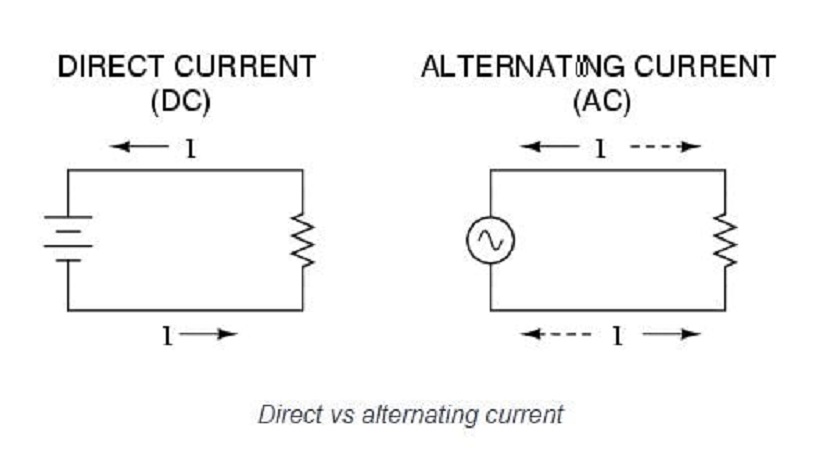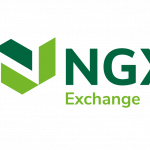Education
AC vs DC Power: All the Pros and Cons for Your Business Needs

Thanks to the marvels of our constantly advancing and eternally impressive technological advancements, flicking on a light switch or plugging in a laptop is even simpler than primitive tasks like combing your hair or putting on clothes.
But when you’re in business, power is even more useful than keeping the lights on. A stable, reliable supply of electricity keeps your operations safe and productive, keeps you in touch with your customers, streamlines your operations, and keeps those profits flowing as consistently as the power to your computers, machines and premises.
Digging a little deeper, though, reveals the true marvel of power. Because while the power to your power-points is AC, the power delivered to your computers, phones and other electronic devices and equipment is much more likely to be DC. Why’s that? What’s the difference? And why does it matter for your business?
Let’s dive in:
AC versus DC
If your knowledge of AC/DC extends a little further than the rock’n’roll band, let’s start right from the beginning: the difference between the acronyms.
AC stands for alternating current, which can both change direction and magnitude, while DC is direct current – an electrical charge that is one-directional.
Thomas Edison famously pioneered DC, but it ultimately proved difficult to convert into either the lower voltages required for the end-user.
Luckily, Nikola Tesla was busily experimenting with AC, which ‘alternates’ multiple times with each blink of the eye – and the rest is history.
In fact, the power supplied to every home and business across the world runs on the Tesla principle, which is generally understood to be an easier and more reliable way to transmit power across long distances.
DC, though, is easier to manage and store locally, especially with the delicate workings and ultra-thin wiring of most applications and devices familiar with the DC power connectors you use both at home and work.
AC: The pros and cons
As well as being better for transmitting electricity from its source to the user, AC power is easily ‘stepped up’ or ‘stepped down’ from lower or higher voltages, including the more stable and precise DC requirements of most of the devices we use power for. AC generators and motors are also quite significantly simpler and cheaper than their DC counterparts.
However, despite the simplicity and the other benefits, AC tends to interfere with other communication lines, including harmonics problems that electrical operations that are erratic and difficult to diagnose and remedy.
DC: The pros and cons
Transmitting DC power requires only one or two smaller conductors, and there are also fewer issues in terms of capacitance, phase displacement, inductance and even power surging. That means less insulation is needed for the same voltage as AC, while interference with other systems is also lower.
However, DC voltage is unable to be ‘stepped up’, unlike the much more versatile AC. In practice, that means a 240-volt device requires DC power delivered at precisely 240 volts, with any additional resistors or instruments to reduce the voltage only complicating the arrangement and wasting energy in the process.
Why it matters for your business
In a nutshell, that’s essentially why your business may be in the market for a DC power connector, which enables your small to medium devices to receive the precise power requirements via the AC source.
As a result, there are countless DC power connectors out there to enable safe, secure, efficient and reliable energy for your business needs, so talk to an expert today to match the right choice to your precise requirements.
Education
AltBank, BAF Strengthen Capacity of Frontline Educators

By Modupe Gbadeyanka
A significant step has been taken by the duo of Alternative Bank (AltBank) and the Busayo Ademuyiwa Foundation (BAF) to address the declining access to trained educators across Nigeria.
The two organisations recently a one-day capacity programme for teachers in the country at the 2025 BAF Teachers’ Conference in Lagos.
The event delivered hands-on training to hundreds of primary and secondary school teachers drawn from underserved communities across the country.
Nigeria’s education sector sits at a critical inflection point. With over 65 per cent of classrooms in underserved regions lacking access to trained educators or modern teaching tools, the learning crisis represents a structural failure with long-term economic consequences if not adequately addressed.
Rather than focus on policy rhetoric or aspirational targets, the conference tackled hard realities including teacher burnout, mental resilience, classroom innovation on a budget, and digital skill development.
Sessions were designed for practicality and replication, enabling attendees to take back immediately usable tools and frameworks to their schools. Specialised workshops on emotional health, low-tech teaching methodologies, and inclusive learning design underscored a broader commitment to both teacher well-being and student outcomes.
Key stakeholders in attendance included policymakers, school heads, and representatives from Nigeria’s corporate CSR sector, underscoring the convergence between social investment and educational equity.
Featured speakers included the president of the Nigerian Union of Teachers, Mr Audu Titus Amba; the General Manager of BIC Nigeria, Mr Anthony Amawe; the founder of Almanah Hope Foundation, Hope Ifeyinwa Nwakwesi; and Doyinsola Jawando-Adebomehin of Sequoia Span.
“The people who hold up Nigeria’s education system don’t need applause, they need backup,” the Executive Director for South at AltBank, Mrs Korede Demola-Adeniyi, stated.
“We see this platform as critical infrastructure. Equipping a teacher with the right tools and support is the most direct path to long-term national productivity,” she added.
“The challenge in Nigeria’s education sector is execution, not awareness. This partnership is part of a broader operational strategy to find the pressure points, inject support where it changes outcomes, and back it with measurable value. Our role is catalytic, not just financial,” Mrs Demola-Adeniyi stated further.
Business Post reports that the conference aligns with the bank’s HEART Strategy, a long-term investment thesis focused on Health, Education, Agriculture, Renewable Energy, and Technology.
Under this framework, the Bank continues to deploy capital and partnerships into scalable solutions targeting Nigeria’s most underserved sectors.
Education
Nigerian Breweries to Empower 1,000 Lagos, Ogun, Enugu Students

By Modupe Gbadeyanka
Plans have been concluded by Nigerian Breweries to support about 1,000 Nigerian students in Lagos, Ogun, and Enugu States.
The foremost brewing company is carrying out this empowerment initiative with a leading non-profit organisation, FATE Foundation, through the Orange Corners Student Ambassadors Programme of the Netherlands.
This partnership marks a significant step in advancing youth entrepreneurship in Nigeria, equipping young people with the knowledge, skills, and opportunities needed to build sustainable businesses and contribute meaningfully to the nation’s economy.
This is because the scheme is to promote entrepreneurship and offer networking opportunities in Nigerian tertiary institutions. Ambassadors are selected from specific universities to inspire students to see entrepreneurship as a desirable career path and to foster a culture of innovation within universities.
It targets students aged 18–35 currently enrolled in tertiary institutions across Lagos, Ogun, and Enugu States.
“The partnership reinforces Nigerian Breweries’ long-standing commitment to youth empowerment and entrepreneurship development. Through initiatives like this, we are creating pathways for the next generation of entrepreneurs and business leaders in Nigeria,” the Corporate Affairs Director for Nigerian Breweries, Mr Uzodinma Odenigbo, stated.
He further highlighted the company’s track record in youth empowerment, noting that since the renewed focus on youth empowerment and entreprenuership, Nigerian Breweries has impacted 2,365 young Nigerians across 24 states and the FCT.
Also speaking on the partnership, the Executive Director of FATE Foundation, Ms Adenike Adeyemi, expressed enthusiasm about the collaboration between Nigerian Breweries and the Orange Corners Programme.
“Nigerian Breweries has been a longstanding partner with Orange Corners Nigeria in many ways. We are delighted to have the company continue to support the Orange Corners Programme and elated that this commitment will reach an additional 1000 young Nigerians leveraging the proven Orange Corners Student Ambassadors framework,” she said.
Ms Adeyemi outlined FATE Foundation’s role to include designing and delivering the training curriculum, managing student registration and participation, maintaining accurate records of all beneficiaries, and coordinating all logistical and technical aspects to ensure successful programme delivery.
Education
Kidnappings: FG Reopens 47 Unity Schools

By Adedapo Adesanya
The federal government has announced the reopening of the 47 unity schools earlier shut down due to security concerns on November 21.
This was disclosed in a statement by the Federal Ministry of Education on Thursday.
It said that the decision to reopen the affected colleges across the country reaffirmed its unwavering commitment to safeguarding students and ensuring the continuity of education.
On November 18, 2025, over 20 schoolgirls were kidnapped by unidentified armed men from the Government Girls Comprehensive Secondary School in Maga, Kebbi state.
Just three days later, on November 21, about 303 students and 12 teachers were kidnapped at St. Mary’s Catholic Primary and Secondary School in Papiri, Niger state.
In response, the federal government shut down 47 Federal Unity Colleges, and some states including Katsina, Taraba, and Niger also closed schools or restricted school activities, particularly boarding institutions.
Rights group including Human Rights Watch lamented that while these measures were aimed at protecting students, they disrupted learning for thousands of children, denied them access to education, and the social and psychological support schools provide.
FULL LIST OF AFFECTED UNITY COLLEGES
North-West:
FGGC Minjibir, FTC Ganduje, FGGC Zaria, FTC Kafanchan, FGGC Bakori, FTC Dayi, FGC Daura, FGGC Tambuwal, FSC Sokoto, FTC Wurno, FGC Gusau, FGC Anka, FGGC Gwandu, FGC Birnin Yauri, FTC Zuru, FGGC Kazaure, FGC Kiyawa, FTC Hadejia.
North-East:
FGGC Potiskum, FGC Buni Yadi, FTC Gashua, FTC Michika, FGC Ganye, FGC Azare, FTC Misau, FGGC Bajoga, FGC Billiri, FTC Zambuk.
North-Central:
FGGC Bida, FGC New-Bussa, FTC Kuta-Shiroro, FGA Suleja, FGC Ilorin, FGGC Omu-Aran, FTC Gwanara, FGC Ugwolawo, FGGC Kabba, FGGC Bwari, FGC Rubochi, FGGC Abaji.
South-West:
FTC Ikare Akoko, FTC Ijebu-Imusin, FTC Ushi-Ekiti, FTC Ogugu.
-

 Feature/OPED6 years ago
Feature/OPED6 years agoDavos was Different this year
-
Travel/Tourism9 years ago
Lagos Seals Western Lodge Hotel In Ikorodu
-

 Showbiz3 years ago
Showbiz3 years agoEstranged Lover Releases Videos of Empress Njamah Bathing
-

 Banking8 years ago
Banking8 years agoSort Codes of GTBank Branches in Nigeria
-

 Economy3 years ago
Economy3 years agoSubsidy Removal: CNG at N130 Per Litre Cheaper Than Petrol—IPMAN
-

 Banking3 years ago
Banking3 years agoFirst Bank Announces Planned Downtime
-

 Banking3 years ago
Banking3 years agoSort Codes of UBA Branches in Nigeria
-

 Sports3 years ago
Sports3 years agoHighest Paid Nigerian Footballer – How Much Do Nigerian Footballers Earn













